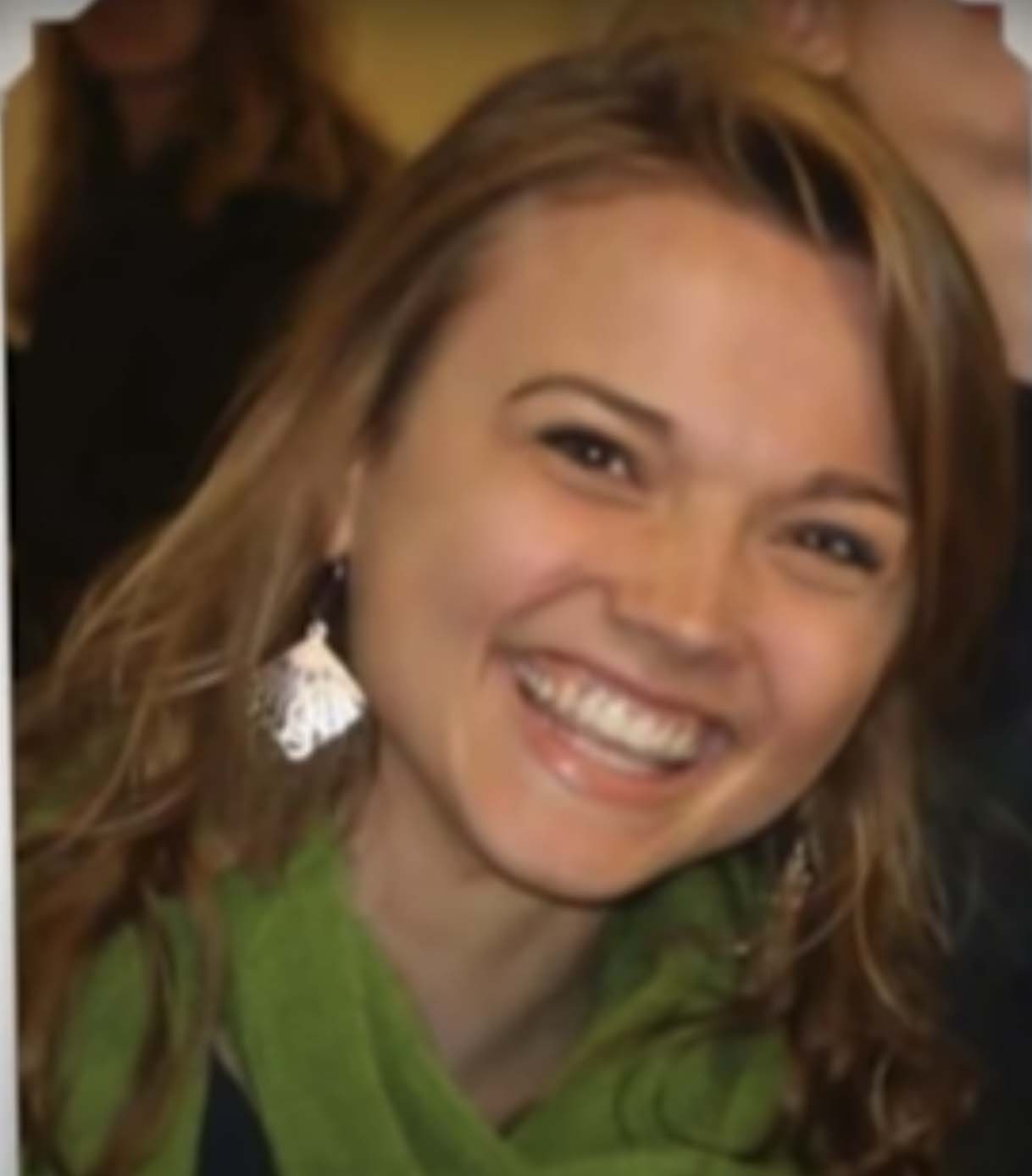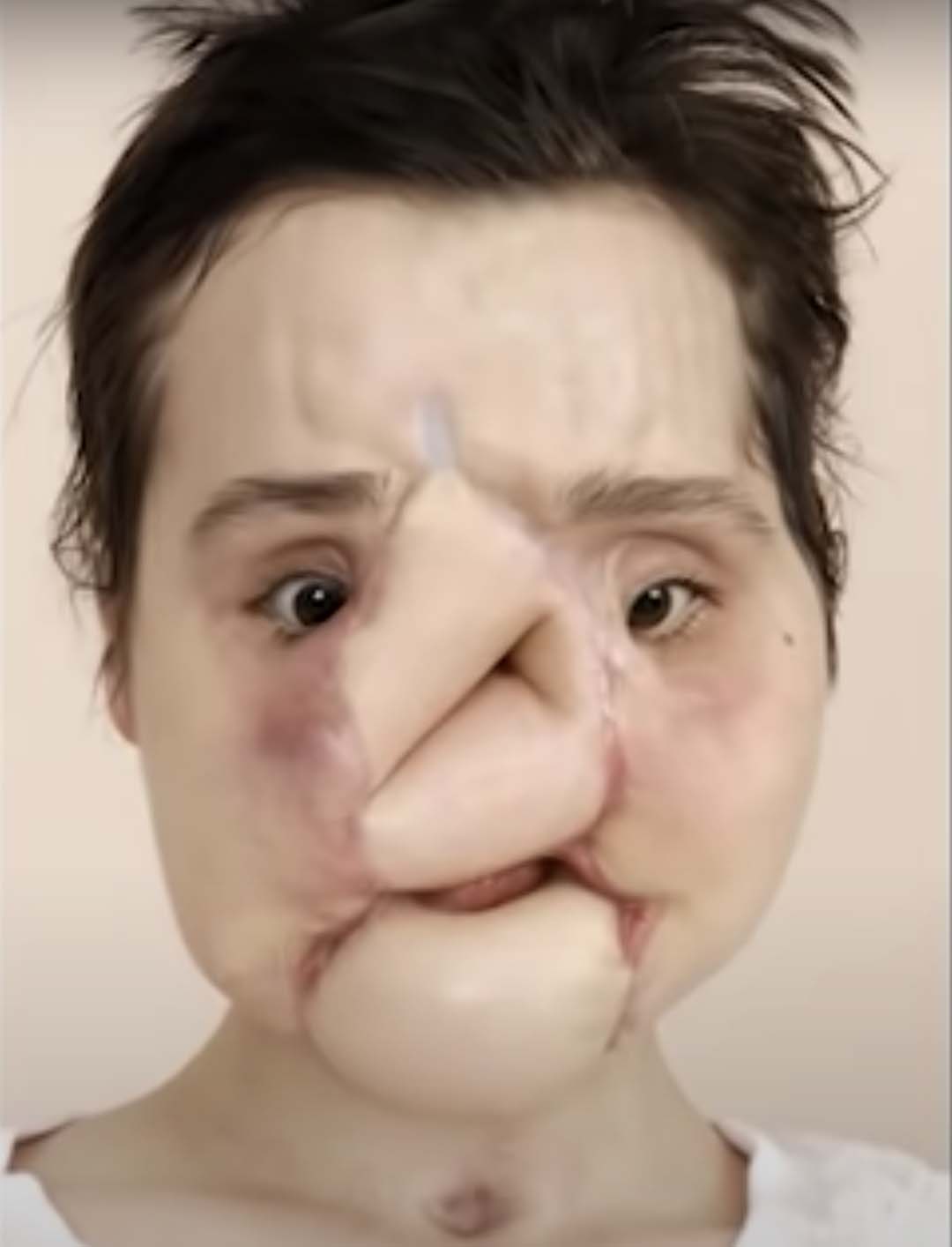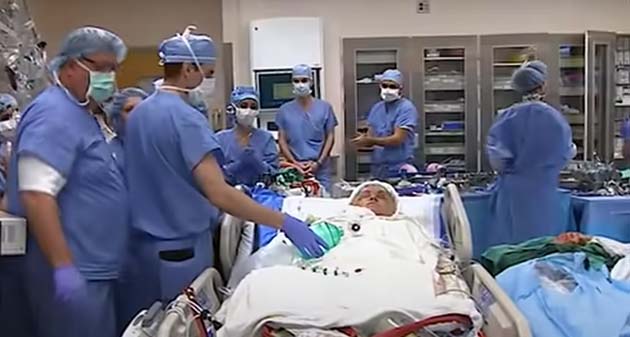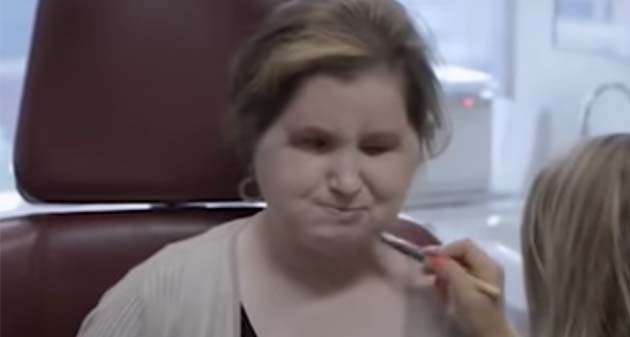Katie Stubblefield had her whole life in front of her, but everything changed after her boyfriend broke up with her, aged 18. Tragically, the teenager shot herself, though by some miracle she survived.
At age 21, Katie became the youngest face-transplant recipient in the United States and only the 40th person to undergo the surgery ever. It took more than 30 hours, but the surgeons did an incredible job and the young woman got a second chance in life.
How Katie looks following the surgery is nothing but incredible.
It’s easy to complain about the small things in our everyday lives. Maybe your morning coffee was a bit cold, the bus was running late, or that television show you watched last night wasn’t as good as you had hoped it would be.
Now, it’s OK to get disgruntled about things – we all, after all, live different lives. At the same time, it’s essential that once in a while, we stop for a second to appreciate what we have, even if we’ve not yet achieved that dream scenarion we’re maybe striving to achieve.
From now on, whenever I feel like I don’t have the energy to complete a small task – say doing the dishes or taking out the garbage – or feel like complaining about the little things in life, I’ve resolved to think of Katie Stubblefield.
When she was just 18, Katie tried to take her own life by shooting herself in the face. Miraculously, she survived, but lost her face – and so was forced to undergo a face transplant.
This is her inspiring story, which we’d love for you to share with others!

Katie Stubblefield had everything going for her. Her family had moved from Lakeland, Florida – where she had lived her whole life – to Owensboro, Kentucky while she was in her sophomore year at high school. Only a year later, the family moved again, that time to Oxford, Mississippi, and her parents began teaching at a local Christian school.
Katie Stubblefield
Katie was “fearless” and “a lot of fun,” her older sister Olivia recalled. She had a great sense of humor and always helped people out. But Katie grew older, Olivia noticed that something changed.
“She wanted to be the best in all of these sports that she’d never even tried before,” Olivia said. “She wanted to be the best academically, she studied for hours, all the time.”
Katie went to the same school her parents taught at, and it wasn’t long before the young girl found love in a classmate. The two soon began discussing the possibility of marriage – according to Katie’s sister Olivia, their relationship was very serious.
Yet during her senior year, Katie’s life would change forever. At the time, she had already experienced chronic gastrointestinal troubles and surgery. In addition, she had had her appendix taken out a year earlier, which led to complications and the removal of her gallbladder.
Moreover, the situation within the family setting was far from ideal. Katie’s parents had both been fired from their jobs at the school.

On March 25, 2014, when Katie had turned 18 years of age, she found texts from another girl on her boyfriend’s phone. She confronted him about it, and it ended up with him breaking up with her.
Tried taking her own life
Heartbroken, Katie decided in that moment that she didn’t want to live anymore. She drove to her brother’s house, and was visibly agitated when she arrived.
“I was like, ‘What are you doing home from school?’” Robert Stubblefield explained. “So, you know, I called my parents, like, ‘Hey, just so you know, she’s at my house right now.’”
Katie’s mother, Alesia, arrived at Robert’s house planning to comfort her daughter. However, Katie said she didn’t want to talk, and so Robert and Alesia went outside to discuss what had happened.
Then, suddenly, they heard what sounded like a door slamming. Alesia and Robert ran inside to find the bathroom door shut and locked.
“I tried to open the door,” Alesia recalled.
“I said, ‘Katie?’ And nothing. And then I said, ‘Katie.’ I said, ‘Are you OK?’ And about the third time I said, ‘Katie,’ that’s when my heart began to just palpitate.”
“At that point, I smelled gunpowder because it was, obviously, indoors, and you can smell it,” her brother Robert added. “And I knew exactly at that point what had happened.”
Katie had shot herself in the face. Family and first responders initially feared the worst: that Kate was gone, or at the very least beyond saving. As it turned out, however, hope remained. Katie still had a pulse and, miraculously, she could still speak. The girl was rushed to the emergency room.

“When she was in that ER … she said, ‘Tell my mom and dad I love her — love them. I’m sorry,’” her father told ABC. “It took a lot of strength.”
“I had no clue what a face transplant was”
Katie had lost parts of her forehead, nose, sinuses, and most of her mouth except the corners of her lips. The bones that made up the jaw and front of her face were also gone. Her eyes remained, though they were severely damaged.
Doctors didn’t know if Katie would make it, but began reconstructing her disfigured face. During the first night of her hospital stay, medical professionals told Katie’s family that her best chance of living something close to a normal life was a face transplant.
“He said, ‘This is the worst wound I’ve ever seen, and I think the only thing that will give her any kind of life again will be a face transplant,’” Stubblefield said. “That was the first time we’d ever heard that term.”
Katie doesn’t remember anything from the day she lost her face. In fact, she said she doesn’t remember much at all from that entire year. Like her family members, though, she was stunned by the fact that it was possible to get a face transplant.
“I had no clue what a face transplant was,” Katie said. “When my parents helped explain everything to me, I was very excited to get a face again and to have function again.”
Her parents had to tell her what had happened, leaving Katie shocked.
“I never thought of doing that ever before, and so on hearing about it, I just didn’t know how to handle it,” she recalled. “I felt so guilty that I had put my family through such pain, I felt horrible.”
Katie was hospitalized in Oxford, Mississippi, and then flown to a hospital in Memphis, Tennessee. Her recovery would take plenty of time, and she was placed on a waiting list for a donor.

After a year, a donor was found. Adrea Schneider had passed away age 31, and her family agreed to donate. Katie was transferred to Cleveland Clinic in Ohio, where she would undergo her face transplantation.
31-hour surgery
According to the clinic, Katie’s procedure involved transplanting the scalp, forehead, upper and lower eyelids, eye sockets, nose, upper cheeks, upper jaw and half of lower jaw, upper teeth, lower teeth, partial facial nerves, muscles, and skin – effectively replacing her entire facial tissue.
On May 4, 2017, 11 surgeons and several specialists – along with some help from virtual reality –began the extensive surgery. It took 31 hours – but it was a huge success.
“To reach this point of recovery has often times been a difficult road to travel, but I’m thankful there’s been a road – and Cleveland Clinic has been the vehicle to help drive me along,” Katie said shortly after the surgery.
“I am forever grateful for the care this hospital has given me and continues to offer on my journey of recovery and healing. To call my surgeons, physicians, nurses and caregivers’ world class’ would be an understatement. And to my donor and her family – words cannot express the appreciation I have for this incredible gift. With a grateful heart, I say ‘thank you’ to all who have made this possible for me.”
Katie still had a long journey ahead of her after the surgery. Her parents became her nursing staff, ready to help 24 hours a day, and she had a list of daily medications that was two-and-a-half pages long.

She attended physical therapy twice a week, worked with a personal trainer twice a week, and had occupational therapy once a week. Moreover, Katie had braille lessons twice or thrice a week and speech therapy four times a week.
The speaking part was especially difficult for Katie. After the transplant she had the donor’s mouth, and only her upper lounge and soft upper palate remained.
Katie Stubblefield after her face transplant
Her parents helped by interpreting what she was saying, but sometimes even they had trouble hearing her. She now had a strong, nasally voice because of her problems with the palate. Katie described her voice as “like a frog.”
Yet even though she had many mountains to climb, Katie knew she was fortunate to be alive.

Fourteen months after the face transplant, Katie’s doctors had completed three major revision surgeries. These were also intended to slim her face, reduce scarring, and improve her eyelids.
“I am able to touch my face now, and it feels amazing,” Katie told CNN.
“You take it for granted, the different components of our faces – the bone, the tissue, the muscle, everything – but when it’s gone, you recognize the big need. Then when you receive a transplant, you’re so thankful.”
Katie plans to attend college online with the aim of possibly pursuing a career in counseling and motivational speaking. Very fitting, considering she is a person that indeed turned her life around – an is now an inspiration to many worldwide.
